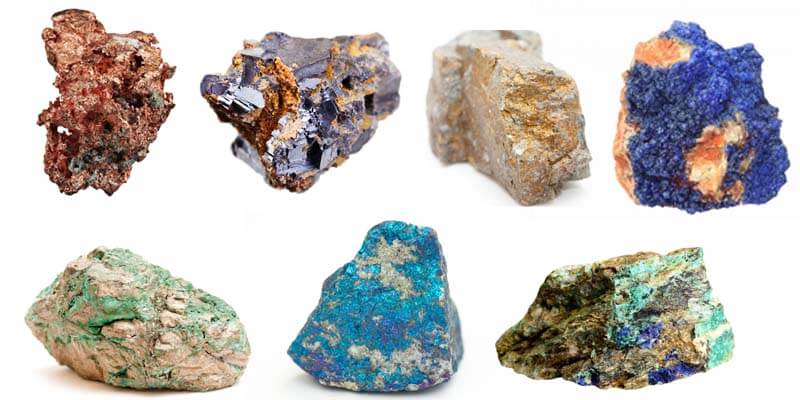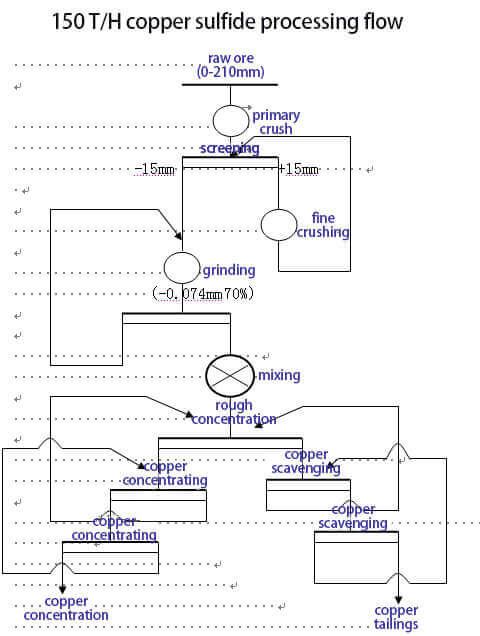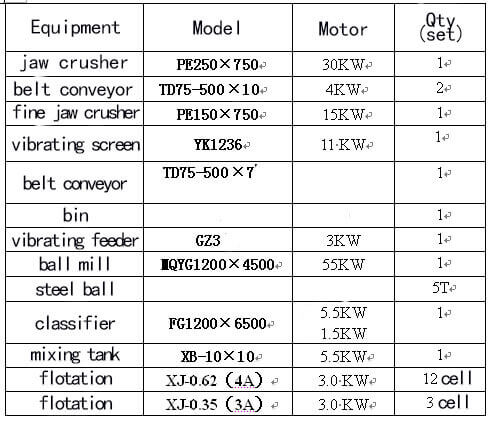Type
Element (Minerals/Ores of)
Mineral Classification
Sulfide
Chemical Formula
CuFeS2
Streak
Greenish black
Mohs Hardness
3.5


Type
Element (Minerals/Ores of)
Mineral Classification
Sulfide
Chemical Formula
CuFeS2
Streak
Greenish black
Mohs Hardness
3.5
Crystal System
Tetragonal
Color
Brass yellow, may have iridescent purplish tarnish
Luster
Metallic
Fracture
Irregular, uneven
According to the metallurgy process, the copper ore is divided into three natural types by the ratio of copper oxide and copper sulfide. That is, sulfide ore, containing less than 10% copper oxide; oxidized ore, containing more than 30% copper oxide; mixed ore, containing 10% to 30% of copper oxide.
(1) Single copper ore. Its composition is relatively simple, and the only valuable component is copper. The gangue is mainly quartz, silicates, and carbonates.
(2) Copper-sulfur ore. valuable components are copper, pyrite.
(3) Copper pyrite. valuable components are copper, pyrite, magnetite.
(4) Copper-molybdenum ore. valuable components are copper, pyrite, magnetite, molybdenite.
(5) Copper-nickel ore. valuable components are copper, nickel-containing pyrite, pyrrhotite.
(6) Copper-cobalt ore. valuable components are copper, cobalt-containing pyrite.
(1) All iron-free copper minerals, such as chalcocite and covellite, are similar in floatability, and cyanide and lime have weaker inhibitory effects on them.
(2) All copper minerals containing iron, such as chalcopyrite and bornite, are susceptible to inhibition by cyanide and lime in alkaline media.
(3) The xanthate collector is mainly chemically adsorbed with the cation Cu2+, so the surface contains more Cu2+ minerals and has a stronger effect with xanthate. The order of strength is: chalcocite > > covellite > > bornite > > chalcopyrite.
(4) The floatability of copper sulfide minerals is also affected by factors such as crystal size, intergranular size and primary or secondary. Crystallization and inlaying are too thin to be difficult to float. Secondary copper sulfide ore is easily oxidized and is less likely to float than primary copper ore.
Almost all copper sulfide ore has iron-containing sulfides, so in a sense, the flotation of copper sulfide ore is essentially the separation of copper sulfide from iron sulfide. The iron sulfide minerals commonly found in copper ore are pyrite and pyrrhotite.


If you have some questions about our products, please feel free to fill out the form below, and we will contact you within 24 hours. Rest assured that we won’t reveal your information to anyone.